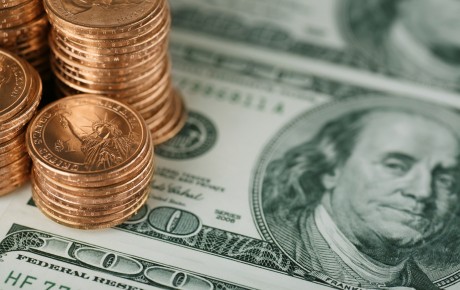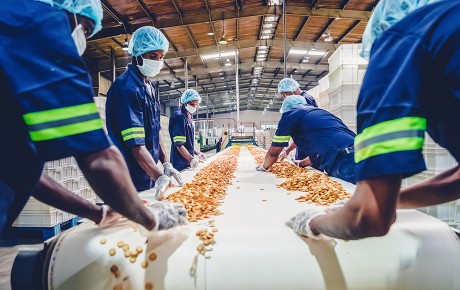
Insurers sense opportunities as lockdown drives fine art online
COVID-19 will overcome the resistance to buying art online and fundamentally change how the risks involved in fine art transactions are mitigated.
Which of us has not idled away some of our lockdown on the internet looking for beautiful objects we wished we could buy? Unlike the markets in other luxury items such as watches, jewellery and fine wine, though, the art market does not have a booming online trade – yet. Digital sales still only represent a tiny fraction of the overall market. The fuse to spark an explosion in online art sales is lit, but it is glowing rather than blazing at the moment. There are early signs, however, that COVID-19 could be the catalyst to finally ignite it.
As one of the world’s leading art insurers, Hiscox serves many private collectors from around the world, as well as museums, dealers, auctioneers, restorers, art advisors and shippers. This position gives us a unique insight into a very discreet and opaque market.
We have a particular interest in the online art market and recently issued our latest Online Art Trade Report, which revealed internet sales generated an estimated $4.82 billion in 2019 - up slightly from 2018's total. Although last year’s meagre growth was set against a backdrop of a slowing global art economy, the online market’s advance has steadily declined in recent years: from 24% in 2015 to 12.5% in 2017 to just 4% in 2019.
Persistent issues
What is stopping the online art market from taking off? There are several reasons, our research indicates. Top of collectors’ list of the most important factors when buying online is the quality of the art on offer, according to a survey we carried out for the 2019 report. But, there is a nagging suspicion many art dealers have used their websites and online platforms to get rid of stock they have struggled to shift in their galleries – somehow imagining that the internet will magically transform their ugly ducklings into swans.
Another stumbling block is that there is no accepted standard by which the quality of art is measured. As anyone who watches the Turner Prize ceremony – or even Antiques Roadshow – knows, one man’s masterpiece is another’s candidate for the charity shop. Robert Parker managed to do it for wine, though – another business in which taste is very subjective – so there is surely more that can be done to reassure art buyers they have bought a gem, not a dud.
There is a nagging suspicion many art dealers have used their websites and online platforms to get rid of stock they have struggled to shift in their galleries – somehow imagining that the internet will magically transform their ugly ducklings into swans.
Price transparency is something else that is really holding back the online art market. Haggling over price is an age-old custom in the art world, but it is much harder to do over the internet. The nagging doubt you might be overpaying simply puts many people off from even bidding online. The problem is not unsurmountable: buying cars used to be just as murky, with the dealer seemingly holding all the aces, but it has been transformed by a new generation of online dealers that have reassured uncertain customers by offering their best take-it-or-leave it prices up front, backed by warranties in case anything goes wrong.
A further problem is that it can be very difficult to find art online that you are interested in buying. Part of the reason for that is that there are so many small art dealers, many of which do not have an online presence. The art market remains incredibly fractured: it had a turnover of over $64 billion in 2019 generated by a staggering 310,000 businesses, according to Clare McAndrew’s 2020 Art Market report. That means each of these dealers has income averaging just over $200,000. Many are likely to earn significantly less than that, meaning they simply cannot afford (or cannot see the point) in taking the gamble of going online.
Awaiting an Amazon?
Since we started surveying the market in 2013 we have seen numerous players come and go or merge with their rivals, but we have yet to see any business dominate the market. More than two-thirds of the online art platforms we polled for this year’s report think the market will be dominated by a few global players.
The ten biggest platforms dominate the online art market at present, accounting for nearly 70% of it between them. Recently, big galleries such as David Zwirner and Hauser & Wirth have started offering smaller players and art fairs the opportunity to sell their works on their platforms, effectively turning their sites into art marketplaces. Interestingly, however, nearly half (48%) of respondents think an outsider could yet disrupt the market – suggesting that existing players still have not created the ‘killer app’ that makes them the go-to site to view and buy art.
The art market remains incredibly fractured: it had a turnover of over $64 billion in 2019 generated by a staggering 310,000 businesses, according to Clare McAndrew’s 2020 Art Market report.
I believe the time is nigh for the online art market to boom. Why? Because COVID-19 and the social distancing it has brought will be here to stay for long enough to fundamentally change how art is bought. We will not have the agony and ecstasy of crowded art fairs and gallery openings, forcing dealers and auction houses to finally confront the big issues holding back the online market.
Sellers will have to find new ways to create the buzz that makes us believe we positively have to buy now or risk missing out on our heart’s delight. I am not sure what those solutions will be, but I am sure they will find them, for what I do know, is art dealers are nothing if not infinitely resourceful and creative entrepreneurs who will rise to the challenge of making up online for the income they will lose through face-to-face sales.
*****************************
This article was first published by the Insurance Day on 13th July 2020: https://insuranceday.maritimeintelligence.informa.com/ID1131499/Focus-Insurers-sense-opportunities-as-lockdown-drives-fine-art-online




